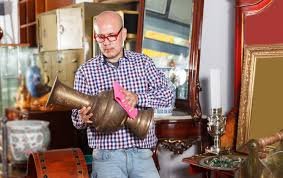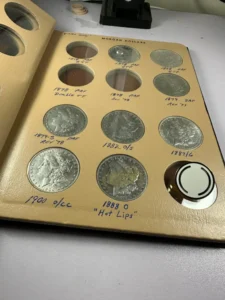In the dusty attic of an old Victorian house, a woman named Claire discovered a wooden trunk filled with what seemed like ordinary relics: a cracked pocket watch, a tarnished silver comb, and stacks of brittle letters tied with faded ribbon. At first glance, they looked like nothing more than sentimental scraps. Yet, within months, Claire turned these forgotten keepsakes into a modest stream of income, unlocking not only unexpected financial value but also a deeper connection to her family’s past.
Claire’s story isn’t unique. All over the world, people are digging through basements, garages, and attics, re-evaluating the worth of what their ancestors left behind. But monetizing family artifacts isn’t just about selling dusty trinkets online. It is about understanding history, tapping into niche markets, and sometimes, creatively reimagining what these items can become.
Let’s take you on a journey that covers:
Why family artifacts hold hidden value
The emotional challenges of parting with heirlooms
Practical ways to monetize them, from direct sales to creative ventures
Real-life stories of surprising profits
Pitfalls to avoid so your treasured history doesn’t become a regrettable mistake
Alright, let’s descend into the attic of opportunity together.
1. What Exactly Are “Family Artifacts”?
When you hear “family artifacts,” your mind immediately goes straight to the obvious: jewelry, antique furniture, vintage clothing. But the definition stretches far beyond that.
Family artifacts can include:
Letters, diaries, or handwritten recipes
War medals and uniforms
Handcrafted quilts or samples
Vintage tools and machinery
Books, first editions, or even school yearbooks
Household items like kitchenware from the 1940s
Photographs, negatives, or slides
Musical instruments
Paintings, sketches, or craftwork
Toys, dolls, or board games from decades past
What makes them “artifacts” isn’t just age, but the context. These objects are carriers of personal history, they’re unique pieces of a family’s narrative that often intersect with broader historical trends. And it’s this blend of personal story and historical relevance that can create surprising market value.
2. Why Would Anyone Buy Them?
To be honest, why would someone pay hundreds, even thousands, for your grandmother’s old brooch or your grandfather’s watch?
Nostalgia is a powerful market force. A 1970s lunchbox that once cost $2 could sell for $100 to someone who wants to recapture a slice of their youth.
Historical significance also plays a role. Diaries from historical periods or wartime letters become firsthand accounts that collectors, museums, and filmmakers value.
Artistic value shouldn’t be underestimated. Handcrafted or artistically designed items often find an appreciative buyer.
Rarity and provenance add value. An item with a backstory, especially linked to historic events, often attracts more attention.
3. The Emotional Dilemma: To Keep or To Sell?
Before we jump into monetization, let’s acknowledge the emotional minefield.
Family artifacts aren’t just things. They’re carriers of memory. Selling them can feel like selling a part of your identity.
Claire, our earlier example, hesitated for weeks before listing her grandmother’s jewelry. Yet, in her words:
“I realized I could honor her memory by making sure these pieces continued to be loved, instead of gathering dust where no one saw them.”
Here are a few strategies to ease the process:
Photograph items in detail before selling
Pass down the story to children or relatives
Keep one symbolic piece from a larger set
Frame letters or photos before selling associated objects
Remember: monetizing family artifacts doesn’t have to mean losing family history. It can be an act of sharing that history with the larger world.
4. The Marketplace: Where the Money Is
If you decide to monetize, where do you start?
a. Online Marketplaces
eBay: Great for vintage toys and memorabilia
Etsy: Ideal for handmade and vintage items
Ruby Lane: For antiques, collectibles, and jewelry
Chairish, 1stdibs: Focus on high-end decor and furniture
b. Specialized Auction Houses
Best for rare, high-value, or historically important items
Examples: Heritage Auctions, Bonhams, Sotheby’s
c. Direct to Collectors
Online forums, Facebook groups, collector fairs
d. Local Antique Shops and Consignment Stores
Great for quick turnaround, though margins are lower
e. Museums and Historical Societies
Might accept items as donations (tax-deductible in some cases)
5. Creative Monetization Beyond Selling
Not ready to part with items permanently? Here are creative income options:
a. Licensing Images
Scan photos, letters, or artwork
License to media companies, publishers, and textile brands
b. Publishing a Book
Compile old diaries or recipes into a book
Use platforms like Amazon KDP
c. Prints and Merchandise
Turn artwork or embroidery into merchandise via platforms like Redbubble
d. Renting for Props
Rent vintage items to film, TV, and theater productions
e. Creating a Blog or YouTube Channel
Share the stories, restoration tips, and monetization journey
Monetize via ads, sponsorships, or Patreon
6. Real-Life Stories of Surprising Profit
The War Letters
James found 200 wartime letters and turned them into a published book, funding his university education.
Grandma’s Cookbook
Lisa self-published her great-grandmother’s Southern recipe book on Amazon and sold thousands of copies.
The Forgotten Guitar
A 1930s Martin guitar found in an attic sold for over $40,000 after restoration.
Old Tools, New Craft
Mark used inherited tools to create furniture marketed as “built with legacy tools,” allowing him to charge premium prices.
7. Tips for Maximizing Value
a. Research Before You Sell
Use WorthPoint, Kovels, or auction archives
b. Preserve Condition
Avoid harsh cleaning chemicals
Store in stable environments
c. Authenticate and Appraise
Get a professional evaluation, especially for autographs and art
d. Tell the Story
Include a note explaining ownership and historical relevance
e. Bundle Strategically
Sell sets together when they add value
8. Common Pitfalls and How to Avoid Them
Selling Too Quickly: Don’t rush, research first
Overestimating Value: Rarity and demand matter more than age
Ignoring Legal or Ethical Concerns: Watch out for items with restricted materials
Ignoring Tax Implications: Report major sales if needed
9. Beyond Money: What You Gain
Monetizing family artifacts isn’t “selling out.” It can be an act of preservation and sharing.
Claire, for instance, created an online gallery to document the stories behind every piece she sold.
This process can help families rediscover forgotten stories—like heroic war medals or regional quilt traditions—and reconnect with unknown ancestors through old photographs.
Unlocking Your Attic
If you’ve ever wondered if your dusty boxes hold value, the answer is likely yes.
This journey isn’t just about money. It’s about:
Discovering forgotten stories
Understanding your family’s place in history
Sharing history with others
And, possibly, turning it into something financially meaningful
Open that trunk. Read those letters. Ask questions. You might be surprised by the treasures you find.
The True Worth of Memories
In the end, family artifacts aren’t valuable simply because someone will pay for them. Their worth lies in the stories they hold. If selling them helps preserve or pass along those stories, that might just be the most meaningful profit of all.






